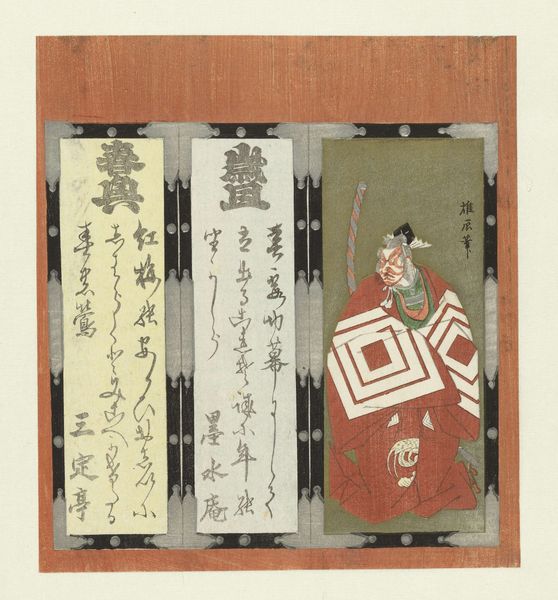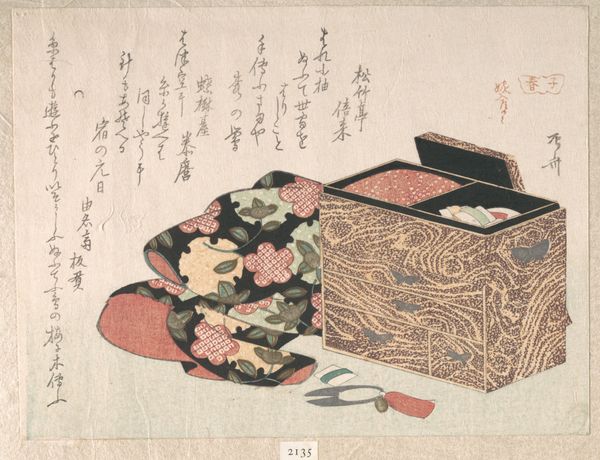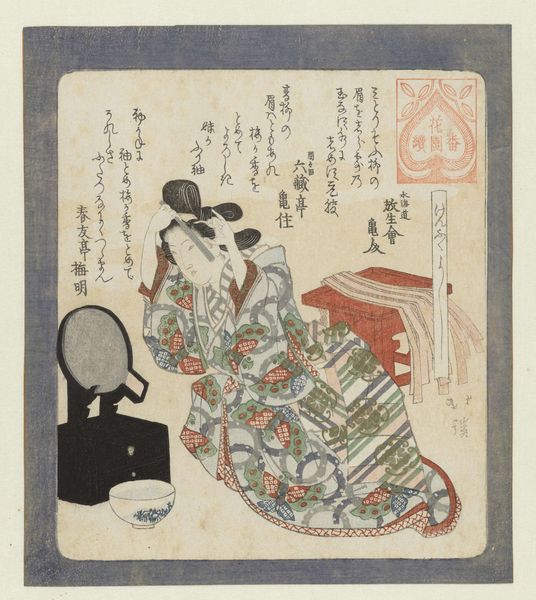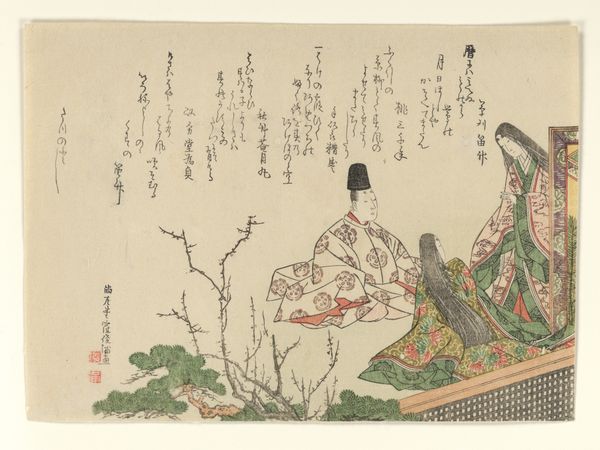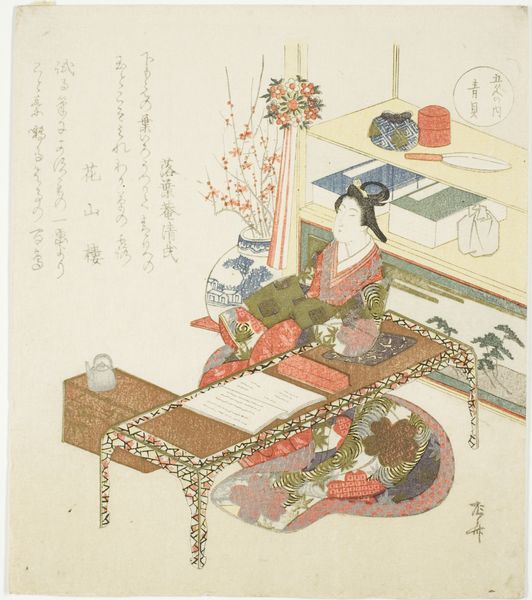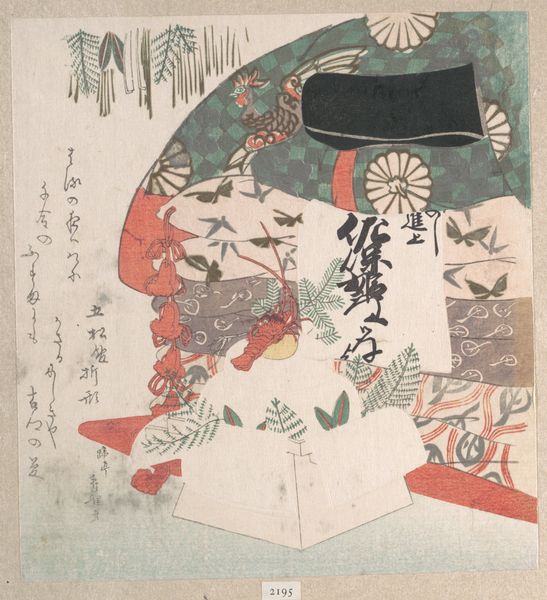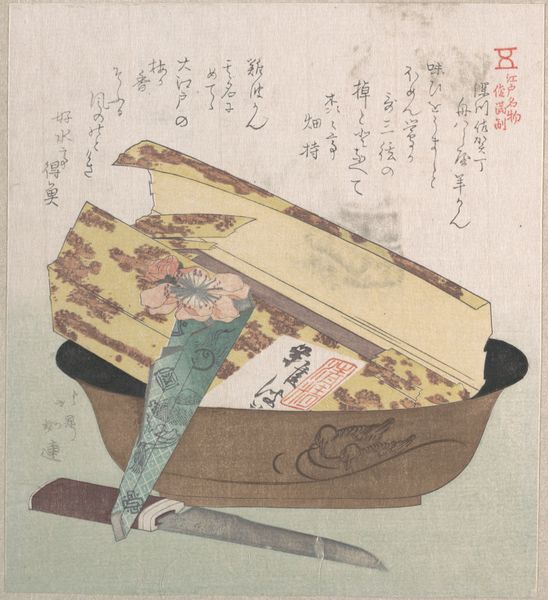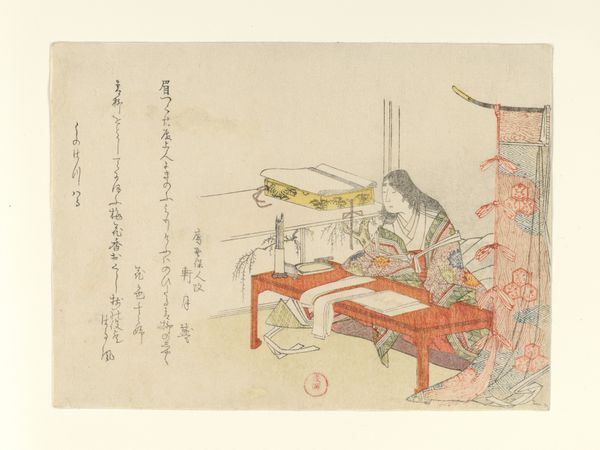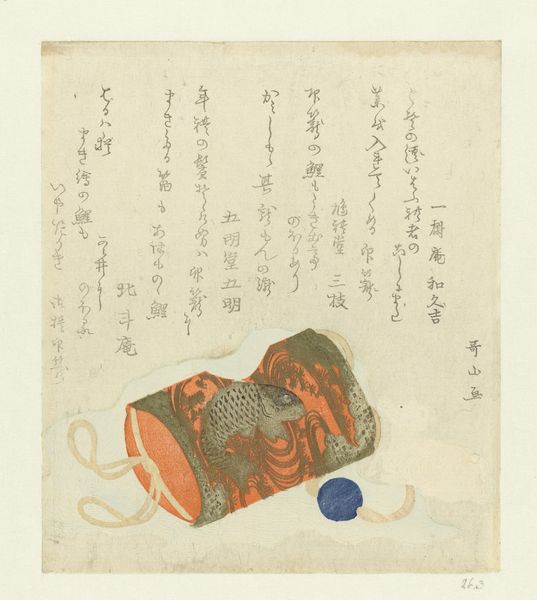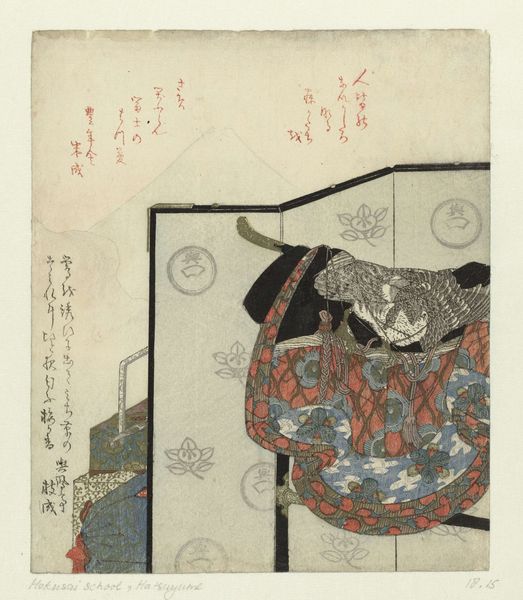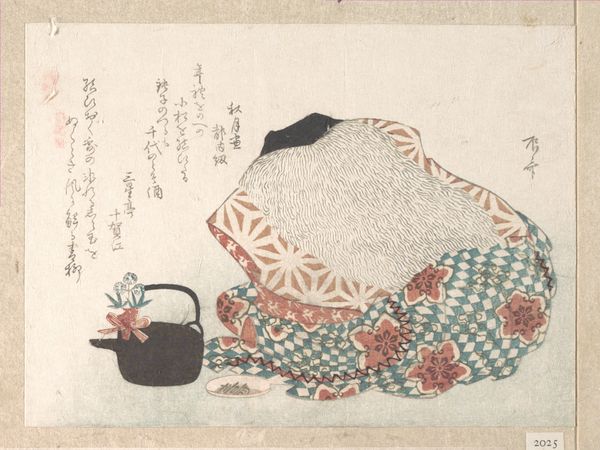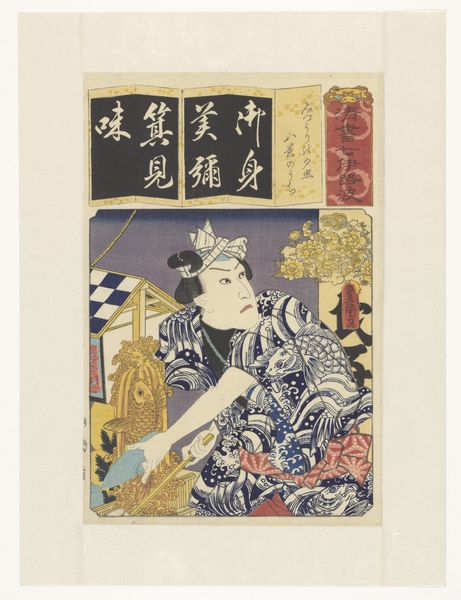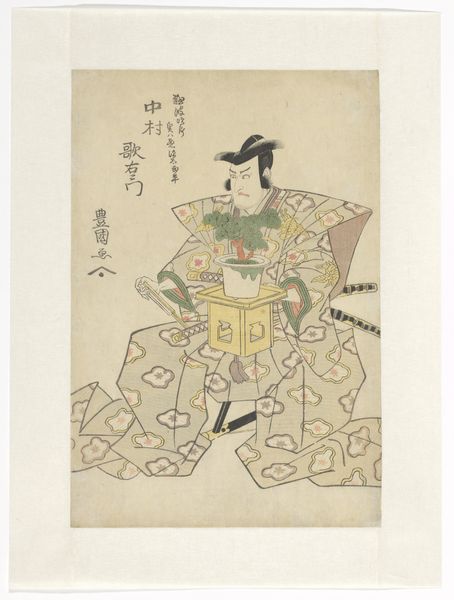
drawing, print, woodblock-print
#
drawing
#
ink paper printed
# print
#
asian-art
#
ukiyo-e
#
japan
#
woodblock-print
Dimensions: Image: 5 3/8 x 6 1/2 in. (13.7 x 16.5 cm)
Copyright: Public Domain
Curator: Let’s turn our attention to this striking image: "Large Lacquer Sake Cup Reading ‘Full House’,” a woodblock print by Kubo Shunman from 1794. Editor: It feels so staged, but charming! Those black lacquer boxes piled up – what is it about a good stack that pleases us so? I also enjoy how flat the image is: almost graphic, reduced to key textures and forms. Curator: That is classic ukiyo-e for you – capturing the floating world, and reducing space to flattened planes. The boxes bear prominent characters, no doubt brand names, and they remind me of grave markers or milestones on a journey. Then the sake cup behind acts as a sign, looming overhead with bold calligraphy referencing prosperity and completion. Editor: Absolutely. Think of the material journey those sake boxes took. Where were these boxes crafted? How far did they travel by land and sea, what did their production demand in terms of raw materials and labor? Who are the anonymous craftspeople in this late 18th-century global trade? Curator: An interesting thing here is that this art seems very modern, a premonition of Warhol's Brillo Boxes. Instead of fine art on a pedestal, this offers an ephemeral moment as if selling luxury products. This visual interplay encourages an interesting blend of art and commodity. Editor: Right, art, commerce, craft, design – boundaries that prove so fluid in practice. The appeal of Ukiyo-e lies in this intermingling of material culture with art traditions. It forces us to question established ideas about art, labor and skill! Curator: Indeed! So, one message I carry with me after considering this art is seeing this integration of luck with labour; how a small, beautiful thing can symbolize a complex exchange of ideas and experiences. Editor: For me, it reinforces art’s intimate entanglement with materials and the processes of everyday life. The boxes were essential items produced on an industrial level for distribution on local, as well as inter-state markets. This makes the entire production cycle crucial.
Comments
No comments
Be the first to comment and join the conversation on the ultimate creative platform.
